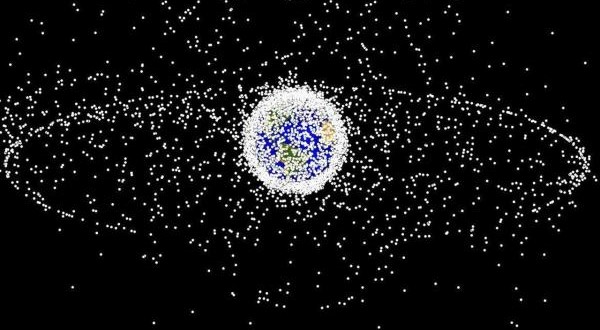Space debris – a pressing problem for humanity – has moved out of the sphere of the movies and is now under consideration by a Congress panel.
If you have watched Gravity, you will be familiar with Sandra Bullock’s tense two-hour battle against space debris.
Now people working on the real-life problem of space debris would like to extend the public attention created by the movie, writes The Guardian.
The Air Force command that tracks space junk issues an average of 1,400 alerts every day warning satellite operators of a possible collision. Crew members aboard the space station have had to shelter in their Soyuz spacecraft three times when hazardous debris was detected with too little warning to maneuver around it.
“Aside from launch and re-entry, orbital debris poses the highest risk to human space flight,” former NASA shuttle astronaut George Zamka told a House Science, Space and Technology subcommittee on Friday. “During my two space missions, we flew upside down and backwards to protect our shuttle windows from orbital debris. And even doing that, we had debris strikes and cracks in our windows.”
Zamka is the Federal Aviation Administration’s deputy associate administrator for Commercial Space Transportation, which oversees mitigation of space debris.
It’s no easy task.
Analysts count some 23,000 objects circling the planet in low earth orbit. These include 4,000 payloads, mainly satellites, of which 1,200 are active. It doesn’t include thousands of objects smaller than four inches — slightly smaller than the diameter of a golf hole — that are too small to be tracked.
More than 5,000 trackable objects are zipping around the globe due to two separate incidents: a 2009 collision between a commercial communications satellite and a decommissioned Russian military communications satellite, and China’s test of an anti-satellite weapon in 2007.
The problem is expected to worsen given the growing presence of commercial space interests and the emerging ability of foreign countries to launch vehicles and payloads into space. Eleven other countries now have that capability.
According to the Air Force, 72 new satellites were placed in orbit in 2012 and 78 new satellites were placed in orbit in one 7-day period in 2013. That includes “cubesats,” small cube-shaped satellites that are being deployed more frequently.
Once they’re up, they don’t come back down quickly.
A Delta 1 rocket body that launched in July 1961 didn’t re-enter the atmosphere until February, according to Zamka.
Government officials and space experts told lawmakers that efforts to remove orbiting debris — and not just dodge it — remain far off.
GOP Rep. Dana Rohrabacher of California, a member of the panel, said a solution needs to come soon.
“The debris issue is not a secondary issue. Debris is something that will limit humankind’s ability to use space for our benefit,” he said. “And we’re getting to a point of saturation now, where either we deal with it or we will suffer the consequences.”
Agencies/Canadajournal
 Canada Journal – News of the World Articles and videos to bring you the biggest Canadian news stories from across the country every day
Canada Journal – News of the World Articles and videos to bring you the biggest Canadian news stories from across the country every day



